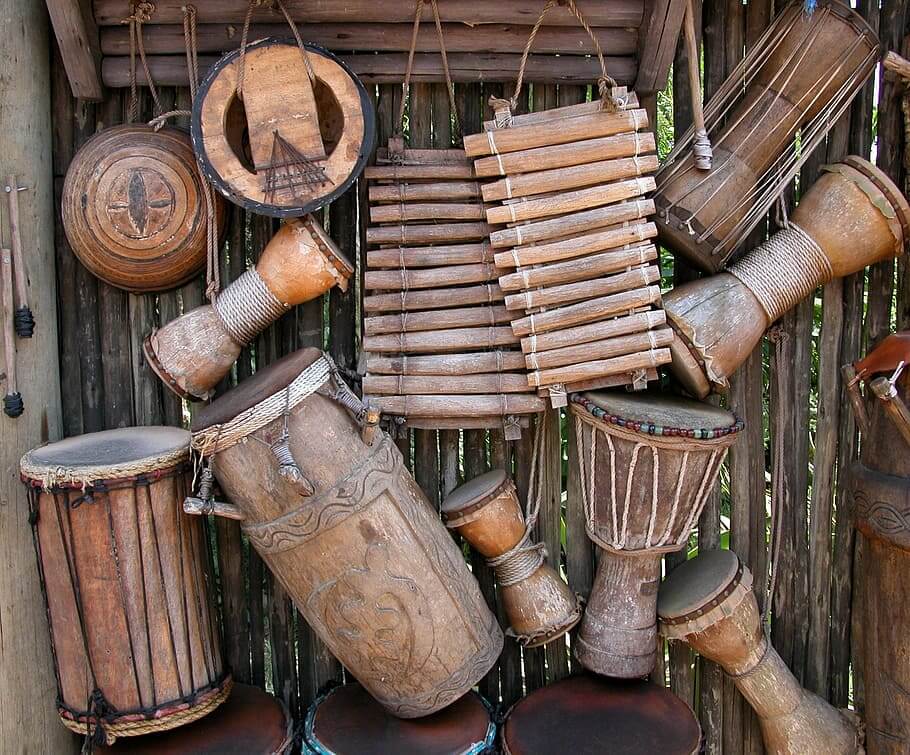Contents
Introduction
The story of the guitar’s evolution has been one of constant innovation and experimentation. The guitar has undergone countless changes from its simple stringed instrument roots to the complex instrument we know today in order to meet the wide range of musical demands of musicians working in different genres. The extended-range guitar is a visionary instrument that expands upon the conventional six-string configuration to offer additional strings, allowing players to explore new sonic landscapes and express their musical ideas with unmatched depth. In this extensive post, we will go further into the world of extended-range guitars, covering their distinctive tunings, benefits and downsides, as well as illustrative instances of well-known performers and songs that have embraced this avant-garde instrument.

Extended Range Guitar Tunings
The extended-range guitar has more strings than a typical six-string guitar and is frequently referred to as a multi-scale, seven-string, eight-string, or nine-string guitar. Each configuration has a unique tune that is designed to maximize the sound of the instrument and give musicians a variety of tonal options.
Seven-String Guitars:
One of the earliest extended-range instruments to acquire popularity was the seven-string guitar. A wider range of sounds is produced by tuning the additional seventh string to B. The following are the top two tunings:
Standard Tuning (Low to High) B E A D G B E
Tuning Drop (Low to High): A E A D G B E
Eight-String Guitars:
Taking the invention a step further, eight-string guitars add an extra low F# or high E string. This addition broadens the range even further, appealing to players looking for more variety. Some notable tunings are:
Standard tuning (low to high): F# B E A D G B E
Drop E Tuning (Low to High): E B E A D G B E
Nine-String Guitars:
Boasting an outstanding nine-string design, nine-string guitars are the pinnacle of extended-range instruments. This comprises either a low A or high F# string augmentation, resulting in a genuinely unique musical palette. Typical tunings consist of:
Standard tuning (low to high): F# B E A D G B E A
Drop C# Tuning (Low to High): F# A# D# G# C# A# C# G#
Pros of extended-range guitars
The many benefits extended-range guitars provide, which improve the musical experience for performers and audiences alike, should be credited for their widespread use.
Versatility and Expanded Range: The most obvious benefit of extended-range guitars is the enormous tone spectrum extension they offer. The additional strings provide a wider treble range and a deeper bass register, opening up hitherto unimaginable melodic possibilities. As a result, performers can explore unexplored areas and experiment with a wide range of genres, including fusion, progressive rock, jazz, and metal.
Enhanced Chord Voicings and Harmonic Complexity: The additional strings on extended-range guitars make it possible to create elaborate chord voicings and complex harmonies that are difficult to accomplish on a traditional six-string guitar. Jazz and progressive artists value this quality in particular since it makes for complex compositions.
Extended Scale Length for Better Playability: Extended-range guitars frequently have longer scale lengths than their conventional counterparts in order to accommodate the additional strings. As a result of the strings’ ideal tension and spacing and improved playing comfort, this feature improves the instrument’s playability and intonation.
Ideal for Low-Tuned Styles and Djent: The genres that rely largely on low-tuned, chuggy riffs and precise syncopation are a perfect fit for extended-range guitars. The extended-range guitar’s capacity to maintain clarity and definition in the lowest registers makes it ideal for the Djent movement, which is distinguished by its complex polyrhythms and palm-muted chugging.
Fusion of Techniques and Styles: With the addition of more strings, guitarists can more fluidly incorporate methods taken from other instruments, such as tapping and two-handed tapping. This blending of methods produces cutting-edge playing styles that push the limits of traditional guitar playing.
Cons of Extended-Range Guitars
Extended-range guitars have many benefits, but they also have some disadvantages. Before stepping into the realm of extended-range guitars, as with other instruments, there are difficulties to take into account.
Learning Curve and Adaptation: For many players, switching from a conventional six-string guitar to an extended-range instrument can be a difficult process. To become fully acclimated to the instrument, which has a longer fretboard, more strings, and a different hand position, it requires time and patience. However, these difficulties can be overcome with commitment and effort.
Weight and Size: Extended-range guitars, especially those with more strings, are heavier and bulkier than regular six-string guitars. For prolonged playing sessions or live performances, this extra weight might not be ideal for musicians who like lightweight instruments.
Limited Availability and Cost: Although extended-range guitar sales have increased dramatically, they are still less common than conventional six-string guitars in the general market. Finding a high-quality extended-range instrument can be difficult, and because they require more skilled craftsmanship, they are frequently more expensive.
Notable musicians and songs
Numerous guitar virtuosos have adopted extended-range guitars over the years, pushing the limits of the instrument’s capabilities. Some of the more significant and well-known players are:
Tosin Abasi (Animals as Leaders)
Tosin Abasi is well-known for his mastery of the eight-string guitar and is a significant player in the progressive metal and fusion genres. His band, Animals as Leaders, uses mind-blowing guitar tricks and complex time signatures in his songs. Songs like “CAFO” highlight his astounding technique and deft use of the extended-range guitar.
Javier Reyes (Animals as Leaders)
Javier Reyes, the second guitarist for Animals as Leaders, is a leader in the field of extended-range guitars. His creative use of an eight-string guitar in tracks like “Physical Education” gives the band’s sound a distinct degree of complexity.
Mrten Hagström and Fredrik Thordendal (Meshuggah)
The use of extended-range guitars, mainly eight-string models, is crucial to Meshuggah’s distinct sound. Mrten Hagström and Fredrik Thordendal, two guitarists, have significantly contributed to the development of the Djent genre. They demonstrate on songs like “Bleed” how to use their extended-range guitars to create intricate rhythms and polyrhythmic patterns.
Mark Holcomb (Peripheral)
Mark Holcomb’s proficiency with the eight-string guitar has had a significant impact on the distinctive sound of the progressive metal band Periphery. His musical style combines technical proficiency with evocative melodies, as heard in songs like “Marigold” and “The Price Is Wrong.”
John Petrucci (Dream Theater)
John Petrucci, the lead guitarist of Dream Theater, is known for using 7-string guitars in various songs. “The Glass Prison” is one such example that demonstrates his mastery of the instrument.
Chuck Hunter
Charlie Hunter is renowned for using an original method when playing extended-range guitar. He frequently uses a handmade seven- or eight-string guitar, on which he performs both the bass and guitar parts. His solo performances serve as an example of the extended-range guitar’s versatility.
Conclusion
Continuous invention and experimentation have characterized the development of the guitar, and the introduction of extended-range guitars has unquestionably had a profound effect on the music industry. These instruments’ wider tonal ranges, improved chord voicings, and longer scale lengths have given musicians more opportunities for expression and inventiveness. Extended-range guitars have a learning curve and some restrictions, but the vastly superior musical exploration they permit makes them an enticing option for daring guitarists.
We can anticipate even more ground-breaking music to come from the fingers of accomplished extended-range guitarists as the instrument develops and more musicians take advantage of its potential. The extended-range guitar is a monument to the limitless possibilities of musical innovation and the unyielding spirit of human ingenuity, whether you are an experienced guitarist eager to expand your horizons or an inquisitive newbie searching for new sound frontiers.
FAQs
What is an extended range guitar?
An extended-range guitar is a type of guitar that has more strings and/or a wider tonal range than standard guitars. These instruments often include seven, eight, or more strings in addition to the standard six-string design.
How does tuning an extended range guitar differ from a standard guitar?
The number of strings and the intended tonal range influence how an extended-range guitar is tuned. Traditional guitars are typically tuned to E-A-D-G-B-E, although extended-range guitars can be tuned to lower pitches or unusual tunings to fit the additional strings.
Can extended-range guitars be used in all types of music?
Yes, extended-range guitars are versatile instruments that can be employed in a variety of musical styles. They are particularly popular in progressive metal, djent, jazz, and experimental music, but they have also made their way into a variety of other types, bringing distinct textures and musical possibilities.
Are extended range guitars suitable for beginners?
While extended-range guitars provide fascinating chances for exploration, their additional strings and broader fretboards might make them more difficult for beginners. Beginners can adapt and find great satisfaction in learning these instruments with devotion and practice.
Where can I find reputable extended range guitar brands?
Reputable extended-range guitar brands are available at music stores, both online and in person. Among the well-known brands are Ibanez, Strandberg, ESP, and Jackson. It is critical to investigate and test many models in order to pick the one that best suits your tastes and playing style.

